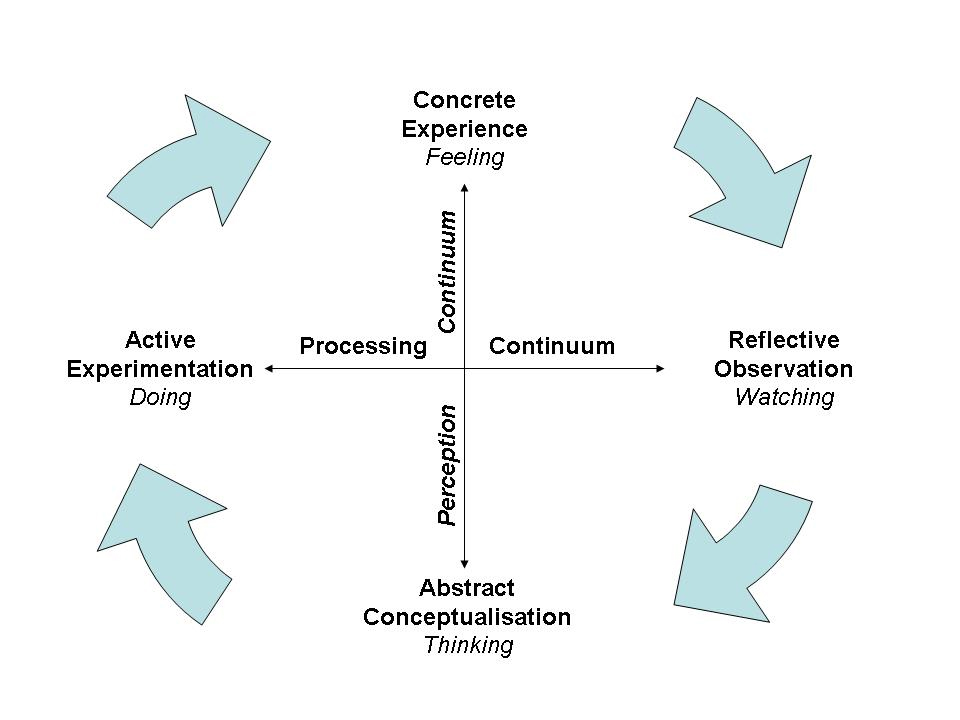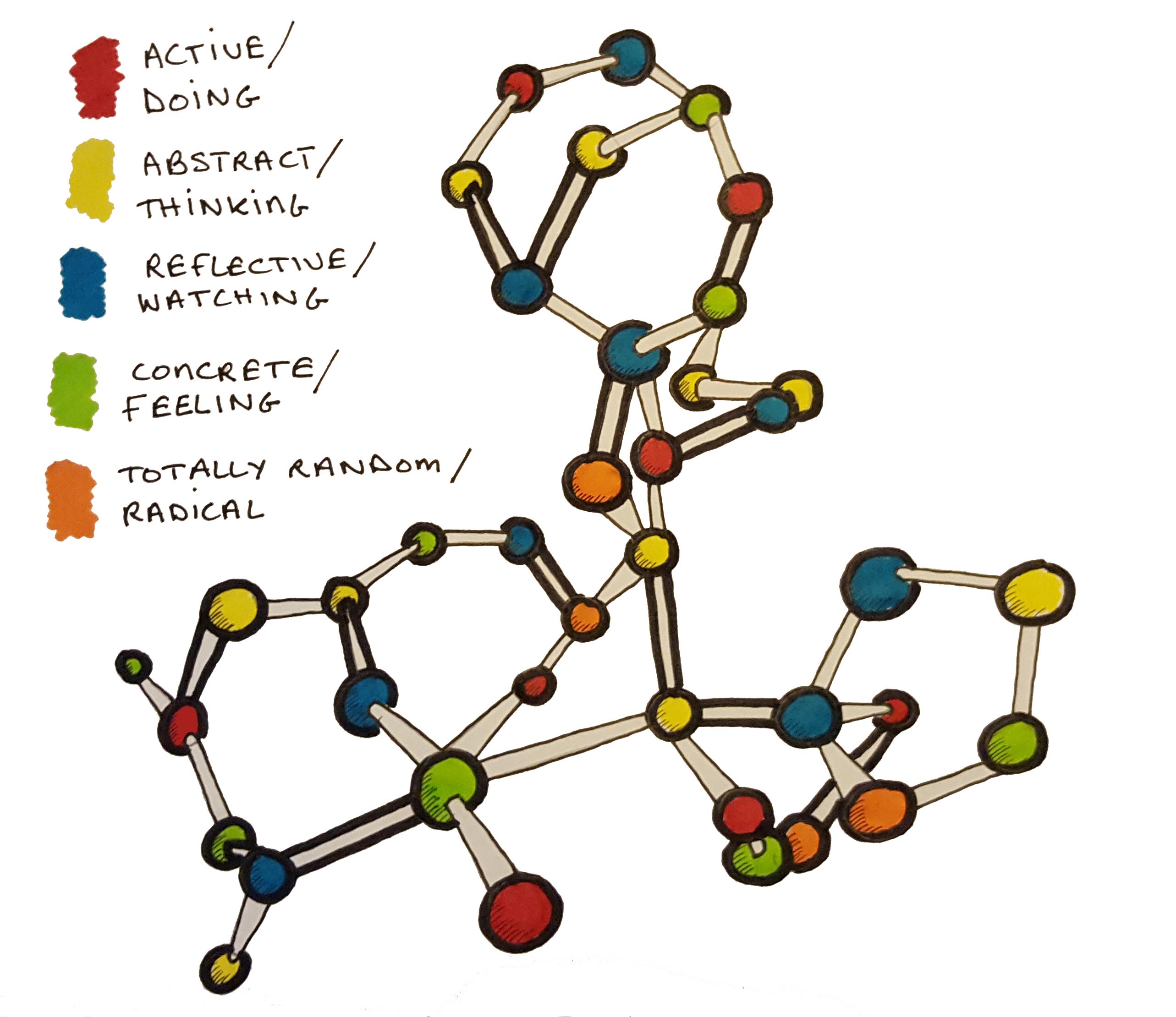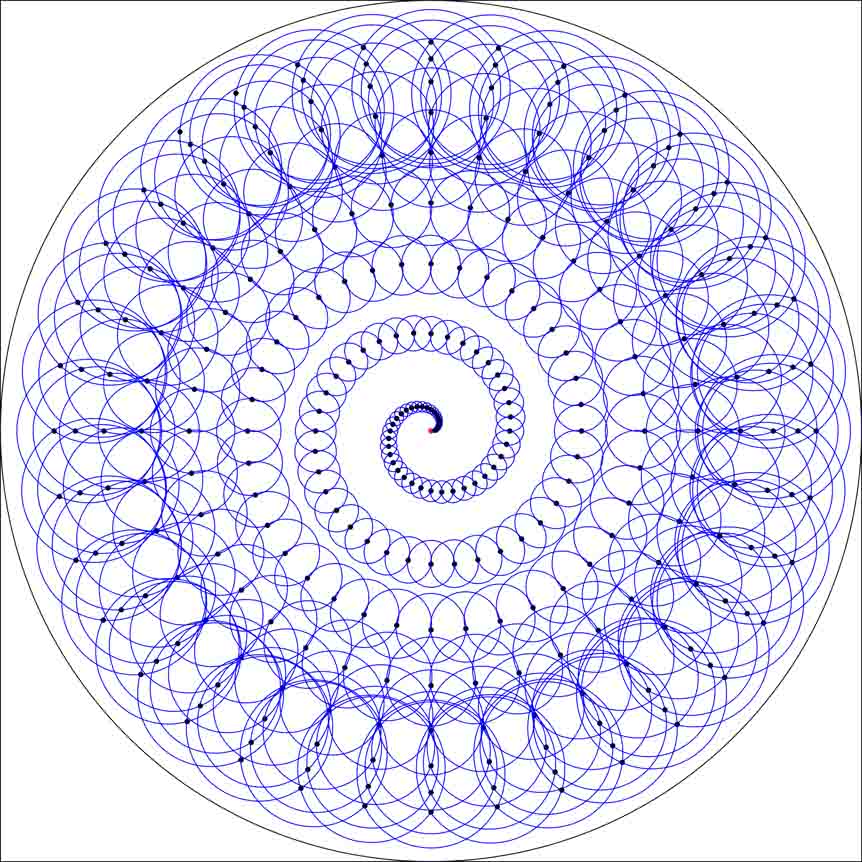Just a few weeks before my MA thesis was due, I was researching for diagrams of learning models, in particular related to Digital Literacies. I had an idea of a model in my head, but I couldn’t seem to find one that suited what I was trying to say. I wanted to find a learning model that was not angular, A > B, or cyclical, A > B > C > A > B > C…… Of course, new lines of thought, are not a good idea in the last few weeks of a thesis, but it was a nagging one and I had to explore it, albeit briefly. In my thesis, it was just a brief paragraph.
According to Merriam-Webster Dictionary learning is the activity or process of gaining knowledge or skill by studying, practicing, being taught, or experiencing something. Learning paradigms include behaviorism, cognitivism, constructivism, and more. Of all the theories, I would agree more with constructivism.
In the Constructivist theory of learning, the classroom is no longer a place where the teacher (“expert”) pours knowledge into passive students; the students are urged to be actively involved in their own process of learning, not only because such opportunities may afford the development of deeper knowledge, but because students actively use their knowledge and skill, engaging in practices that they will need to use elsewhere [UCC 2016, Boaler 2001, Perkins 1992].
They are all right, and they are all wrong. They are all right about certain areas of learning; they are all wrong, if each is trying to be a separate theory. Learning models need to become biological, since they are describing the activity or process of gaining knowledge or skill by biological beings – us, upskilled emotional animals.

Kolb’s Cyclical Model of Experiential Learning (Clark 2012)
In the educational models I found, such as Klob’s cyclical model of learning, above, they appear too organised, going round and round. Yes, I know its a 2D model, but learning is essentially more chaotic, and we need to show this. If we truly want to change education paradigms, to be inclusive and lifelong, we need to change the diagrams. Yes, Klobs model includes doing, watching, thinking, action and reflection but it doesn’t look like it does. If we are going to use visual models to demonstrate our theories, they must reflect the theory more accurately. Klob’s model doesn’t reflect life patterns, of stopping and starting, of quitting school and then going back to education as a mature student, it doesn’t reflect having a Ph.D and not being able to get a job, of earning a lot and losing it all, of climate change, of sickness, sexism, racism, and more. There are different levels of action, of reflection, inherited feelings, enough cats on the internet to think everyone is obsessed with cats. Ah, the old Einstein quote again, Information is not Knowledge. I would like to see a more random Klob’s model, maybe in 3D. Could Klob’s model work if molecular in design?
Breslin version of Klob’s model of Experiential Learning with random nodes (authors own)
When I was a teenager, I read a series of non-fiction books by Isaac Asimov about scientists. One of my favourites was about accidental discoveries. Random acts that resulted in amazing discoveries. A few of his words always stuck with me. How whenever he was stuck writing, he’d go to the cinema, and ‘not think’ about it, and he would come out refreshed with new ideas. Einstein is reputedly to have” thought of it while riding my bicycle”, it being Special Theory of Relativity. Fleming and his mouldy penicillin. Perkin and the colour Mauve (If you haven’t read Mauve by Simon Garfield, give it a go. Perkin’s accidental discovery of the first aniline dye, mauve, eventually transformed biochemistry and medicine). Stephanie Kwolek and Kevlar, Daina Taimiða’s crocheted hyperbolic planes (a Latvian mathematician, who I adore. I’ll write more about her work in another post). Taimiða didn’t discover non-Euclidean geometry, but she was the first to make a practical model, something mathematicians thought was impossible.
Thinking of my own learning experience, I drew a model/ diagram of my own experience.
Breslin learning model – rough diagram (authors own)
The lines represent my learning experience, the dots are significant random thoughts and theories. Starting at baby stage, my learning experience was basic and wobbly (but still significant!), until school, where I was in training to be a straight vertical line. The angles coming out from the straight vertical line are my deviancies, which proceeded to get worse with age. Puberty hits, I did have thoughts and theories, but they tend to be too chaotic, and not overly significant, apart from the usual puberty thoughts and theories. Secondary school saw much deviancy, I ending up quitting school. From a young adult until middle adult, where I am now, I can say my education was chaotic. With seemingly random lines and dots chaotically intermingling, starting, stopping, as my education, career and interests waxed and waned. Until now, in middle-age-dom, back in college, learning about learning. (When I started this MA in UCC, I didn’t realise how interested I was in theories of learning, I had never even hear of the word pedagogy. As an experienced craft teacher, however, I know about teaching and my students, and never cease to be amazed about I much you can learn from your students.)
My learning model is like a combination of hyperbolic geometry and chaos theory. A starting point, that can be extended to three and more dimensions, dynamical systems that are highly sensitive to initial conditions. A constructivist chaotic hyperbolic model of learning, where is impossible to say which direction it will go and what are the real outcomes; and that is what makes learning exciting, honest, and a lifelong experience.
Learning models need to be open to being radical and random, hence the random nodes in my version of Klob’s model above. To create a positive learning environment, we need to create a template of a model, that can be adapted to different paradigms, contain elements of different theories, that can be personalised according to the needs and wants of the individual.
If each person learned, from an early age, that they could create and adapt their own program of learning, throughout life, adding skills, knowledge and life experience, imagine the sense of empowerment they could have. As I said above, I only added a brief mention of this in my thesis. There is much more to think about, and much more to learn.
Although not as random as my hand-drawn model, I had to add this beautiful diagram of Hyperbolic Geometry, by Bourquin.
Diagrams of Hyperbolic geometry [Bourquin, 2006]
Bibliography
Boaler, Jo. “Mathematical Modelling and New Theories of Learning.” Teaching Mathematics and its Applications 20.3 (2001): 121–128.
Bourquin, R. (2006) “Hyperbolic Geometry (Demos).” http://raoul.koalatux.ch/.
Clark, D.R. (2012). Design Methodologies: instructional, thinking, agile, system, or x problem? Retrieved from http://nwlink.com/~donclark/design/design_models.html
Perkins, D. N. (1992). What constructivism demands of the learner. In T. M. Duffy, & D. H. Jonassen (Eds.),Constructivism and the technology of instruction (pp.161-166). Hillsdale, NJ: Lawrence Erlbaum Associates Inc
UCC. (2016) Education Theory/Constructivism and Social Constructivism in the Classroom – UCD – CTAG. www.ucdoer.ie.





So, what do you think ?